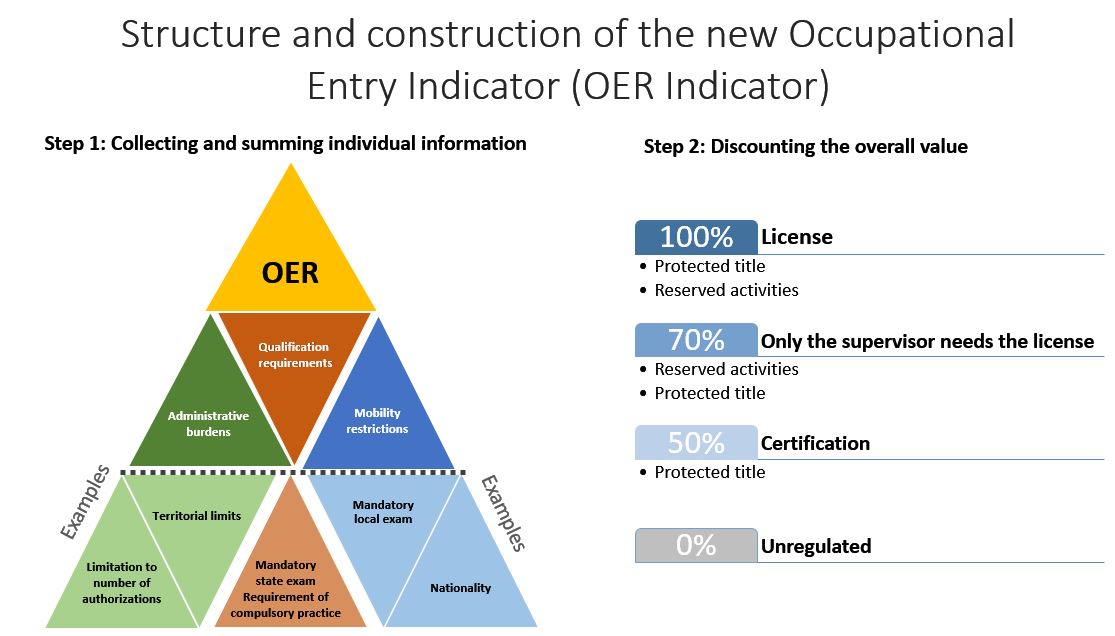Collapse Contents
The OER Indicator is a novel cross-country composite indicator measuring the stringency of occupational entry regulations across all US states, Canadian provinces, 15 European countries, Israel, India and South Africa, for a set of five professional (accountants, architects, civil engineers, lawyers and real-estate agents) services, nine personal services (aestheticians, bakers, butchers, driving instructors, electricians, hairdressers, painters, plumbers and taxi drivers ) and nurses. At the most aggregate level, the indicator differentiates between three types of occupational regulations: licensing, a situation in which only the manager/supervisor requires a license, and certification. Further, the indicator assesses the regulatory barriers along three dimensions: administrative burdens, qualification requirements and foreign entry restrictions. It provides a comparative source of information on the various approaches used across countries to regulate entry into services, notably distinguishing between different areas of regulation (administrative, qualification and mobility requirements) and different types of regulation (licensing, a situation in which only supervisors require a license, and certification).
> DATABASE
Do occupational entry regulations affect productivity in services?, by By Indre Bambalaite, Giuseppe Nicoletti and Christina von Rueden, Ecoscope Blog (March 2020)
Rethinking occupational entry regulations by Indre Bambalaite, Morris Kleiner, Giuseppe Nicoletti and Christina von Rueden, VoxEU (April 2020)
Occupational licensing and job mobility in the US by Mikkel Hermansen
A Primer on Emergency Occupational Licensing Reforms for Combating COVID-19 , Mercatus, March 2020
Workshop: The economic consequences of occupational licensing
Paris, 11th October 2019
The OECD organised a workshop on the economic consequences of occupational licensing on the 11th of October, 2019. It featured the most-cited experts in the field:
- M. M. Kleiner (Professor, University of Minnesota)
- Davud Rostam-Afschar (Assistant Professor, University Hohenheim)
- Mario Pagliero (Professor, University of Turin)
- Maria Koumenta (Lecturer, Queen Mary University of London).
> Agenda
